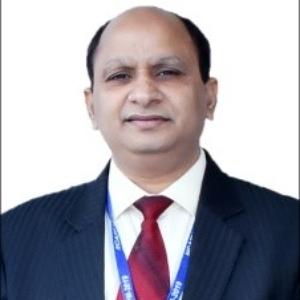When natural or live enzymes are utilised to initiate or speed up a chemical reaction, this process is referred to as enzyme biocatalysis. In 1858, Louis Pasteur conducted one of the earliest instances of contemporary enzyme biocatalysis. In order to create tartaric acid, Pasteur utilised a variety of microorganisms, including the mould Penicillium glaucum, as enzymes in a fermentation process. There are several applications for tartaric acid, including cleaning different metals, tanning leather, and food preservation. One of the first recorded cases of enzyme biocatalysis was carried out by renowned scientist Louis Pasteur. Metals have been used as catalysts in several sectors for many years. They may be made at a low cost and decompose naturally. They frequently perform quicker reactions at lower concentrations, which is one advantage of these enzymes employed in biocatalysis.
Frequently, they can operate in aqueous conditions and at less abrasive pH and temperature ranges.
They can be made in considerably greater quantities.
For a certain reaction, they may be made to be much more targeted.
Various plants (such as carrots and soy), fungi (such as mushrooms), bacteria, and animal organs like pigs' livers are just a few of the sources of these enzymes. Using recombinant DNA technology, newer versions of these enzymes can be created.

Dai Yeun Jeong
Asia Climate Change Education Center, Korea, Republic of
Sergey Suchkov
N.D. Zelinskii Institute for Organic Chemistry of the Russian Academy of Sciences, Russian Federation
Enrico Paris
CREA-IT & DIAEE, Italy
Tokeer Ahmad
Jamia Millia Islamia, India
Enrico Paris
CREA-IT & DIAEE, Italy
Jiri Dedecek
J Heyrovsky Institute of Physical Chemistry , Czech Republic
Dai Yeun Jeong
Asia Climate Change Education Center, Korea, Republic of
Osman Adiguzel
Firat University, Turkey



Title : Distant binuclear vanadium V(II) cationic sites in zeolites and their reactivity
Jiri Dedecek, J Heyrovsky Institute of Physical Chemistry , Czech Republic
Title : Advanced nanostructures for carbon neutrality and sustainable H₂ energy
Tokeer Ahmad, Jamia Millia Islamia, India
Title : Personalized and Precision Medicine (PPM) as a unique healthcare model via bi-odesign, bio- and chemical engineering, translational applications, and upgraded business modeling to secure the human healthcare and biosafety
Sergey Suchkov, N.D. Zelinskii Institute for Organic Chemistry of the Russian Academy of Sciences, Russian Federation
Title : Antibody-proteases as a generation of unique biomarkers, biocatalysts, potential targets and translational tools towards nanodesign-driven biochemical engineering and precision medical practice
Sergey Suchkov, N.D. Zelinskii Institute for Organic Chemistry of the Russian Academy of Sciences, Russian Federation
Title : Dimethyl ether synthesis from syngas over Cu-Zn/Al2O3 catalysts prepared using the Sol-Gel method
Uday Som, Research and Development Engineer, Japan
Title : Oxidation of methane to methanol over pairs of transition metal ions stabilized in the zeolite matrices
Jiri Dedecek, J Heyrovsky Institute of Physical Chemistry , Czech Republic
Title : The Concept and Implications of Low Carbon Green Growth
Dai Yeun Jeong, Asia Climate Change Education Center, Korea, Republic of
Title : Memory characteristics and diffusionless phase transformations in shape memory alloys
Osman Adiguzel, Firat University, Turkey
Title : The Fe PNP 15 H2O catalyst reduction catalytic test and its valorisation as acid catalyst to the methylal synthesis
Rabeharitsara Andry Tahina, GPCI-ESPA Antananarivo University, Madagascar